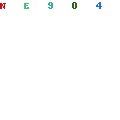Things I should write about separately
> the sea
> the Scoter
> the geese
> the nuthatches
> the rest ( yrw. Hemit, ducks. Waders )
> Stuff missing from an earlier time (month and year)- Laughing Gull, all but 1 Snowy Egret, Tricolor Heron, mud at low tide!
But until then....
 |
| tame Brown-heads |
 |
| not as tame as this pic makes it look - Ross's |
 |
| weird looking dude - hybrid |
Location: Chincoteague
Observation date: 11/13-14/10
Number of species: 79
Snow Goose - Chen caerulescens X
Snow x Ross's Goose (hybrid) - Chen caerulescens x rossii 1 good looking 'fake' Ross's goose, small in stature, small bill, round head but with all pink bill and grin patch
Ross's Goose - Chen rossii 3
Canada Goose - Branta canadensis 50
Tundra Swan - Cygnus columbianus 16
Gadwall - Anas strepera 30
American Wigeon - Anas americana 50
American Black Duck - Anas rubripes 250
Mallard - Anas platyrhynchos 20
Northern Shoveler - Anas clypeata 40
Northern Pintail - Anas acuta 100
Green-winged Teal - Anas crecca 250
Surf Scoter - Melanitta perspicillata X
White-winged Scoter - Melanitta fusca 1 female feeding in Tom's Cove
Black Scoter - Melanitta nigra 8
Bufflehead - Bucephala albeola 40
Common Merganser - Mergus merganser 1
Red-breasted Merganser - Mergus serrator 1
Ruddy Duck - Oxyura jamaicensis 100
Red-throated Loon - Gavia stellata 30
Common Loon - Gavia immer 50
Horned Grebe - Podiceps auritus 1
Northern Gannet - Morus bassanus 1
Brown Pelican - Pelecanus occidentalis 3
Double-crested Cormorant - Phalacrocorax auritus 100
Great Blue Heron - Ardea herodias 15
Great Egret - Ardea alba 50
Snowy Egret - Egretta thula 5
Little Blue Heron - Egretta caerulea 9
Black-crowned Night-Heron - Nycticorax nycticorax 1
Black Vulture - Coragyps atratus 10
Turkey Vulture - Cathartes aura 20
Bald Eagle - Haliaeetus leucocephalus 6
Northern Harrier - Circus cyaneus 2
Sharp-shinned Hawk - Accipiter striatus 3
Cooper's Hawk - Accipiter cooperii 2
Clapper Rail - Rallus longirostris 1
American Coot - Fulica americana 3
Black-bellied Plover - Pluvialis squatarola 2
Semipalmated Plover - Charadrius semipalmatus 2
Solitary Sandpiper - Tringa solitaria 3
Greater Yellowlegs - Tringa melanoleuca 3
Willet (Western) - Tringa semipalmata inornata 30
Lesser Yellowlegs - Tringa flavipes 1
Marbled Godwit - Limosa fedoa 15
Sanderling - Calidris alba 35
Western Sandpiper - Calidris mauri 2
Least Sandpiper - Calidris minutilla 4
Dunlin - Calidris alpina 10
Long-billed Dowitcher - Limnodromus scolopaceus 11
Bonaparte's Gull - Chroicocephalus philadelphia 1
Laughing Gull - Leucophaeus atricilla 3
Ring-billed Gull - Larus delawarensis 75
Herring Gull (American) - Larus argentatus smithsonianus 40
Great Black-backed Gull - Larus marinus 25
Forster's Tern - Sterna forsteri 1
Royal Tern - Thalasseus maximus 100
Belted Kingfisher - Megaceryle alcyon 1
Red-bellied Woodpecker - Melanerpes carolinus 1
Downy Woodpecker - Picoides pubescens 4
Northern Flicker - Colaptes auratus 1
Carolina Chickadee - Poecile carolinensis 5
Red-breasted Nuthatch - Sitta canadensis 6
Brown-headed Nuthatch - Sitta pusilla 11 including 4 drinking from puddle behind our car
Carolina Wren - Thryothorus ludovicianus 1
Hermit Thrush - Catharus guttatus 1
Northern Mockingbird - Mimus polyglottos 1
European Starling - Sturnus vulgaris X
Yellow-rumped Warbler - Dendroica coronata X 'everywhere'
Palm Warbler - Dendroica palmarum 2
Savannah Sparrow - Passerculus sandwichensis 4
Song Sparrow - Melospiza melodia 30
Swamp Sparrow - Melospiza georgiana 5
White-throated Sparrow - Zonotrichia albicollis 1
Northern Cardinal - Cardinalis cardinalis 4
Red-winged Blackbird - Agelaius phoeniceus 50
Boat-tailed Grackle - Quiscalus major 15
House Finch - Carpodacus mexicanus 50
American Goldfinch - Spinus tristis 1
House Sparrow - Passer domesticus 1
This report was generated automatically by eBird v2(http://ebird.org)

































